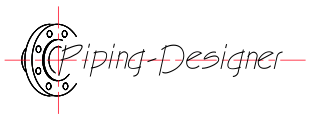Nusselt Number
Nusselt Number Formula |
||
|
\( Nu \;=\; \dfrac{ h \cdot L_c }{ k }\) (Nusselt Number) \( h \;=\; \dfrac{ Nu \cdot k }{ L_c }\) \( L_c \;=\; \dfrac{ Nu \cdot k }{ h }\) \( k \;=\; \dfrac{ h \cdot L_c }{ Nu }\) |
||
| Symbol | English | Metric |
| \( Nu \) = Nusselt Number | \(dimensionless\) | \(dimensionless\) |
| \( h \) = Heat Transfer Coefficient | \(Btu\;/\;hr-ft^2-F\) | \(W\;/\;m^2-K\) |
| \( L_c \) = Characteristic Length | \(ft\) | \(m\) |
| \( k \) = Thermal Conductivity | \(Btu-ft\;/\;hr-ft^2-F\) | \(W\;/\;m-K\) |
Nusselt number, abbreviated as Nu, a dimensionless number, is heat transfer analysis to characterize the convective heat transfer coefficient. It relates the rate of convective heat transfer to the rate of conductive heat transfer in a fluid flow over a solid surface.
The Nusselt number is widely used in engineering, particularly in the design of heat exchangers, cooling systems, and other thermal management systems. It often appears in correlations derived from experimental data or theoretical models, depending on factors like flow type (laminar or turbulent), geometry, and fluid properties (Reynolds number and Prandtl number).
The Nusselt number quantifies the "boost" convection provides to heat transfer. A larger Nu indicates more effective convection, while a value near 1 suggests conduction dominates. Its exact value and interpretation depend on the specific system and conditions In "laminar flow" Nusselt number is typically lower (3–10), as convection is less vigorous due to smooth, orderly fluid motion and "turbulent flow" is higher (50–1000), reflecting the chaotic mixing that boosts heat transfer.

